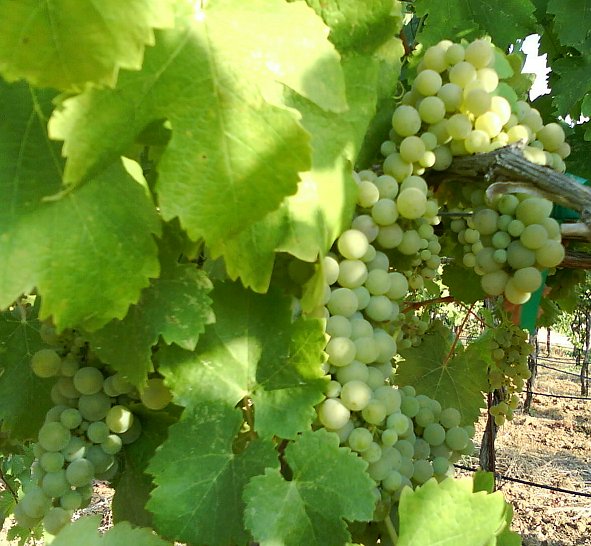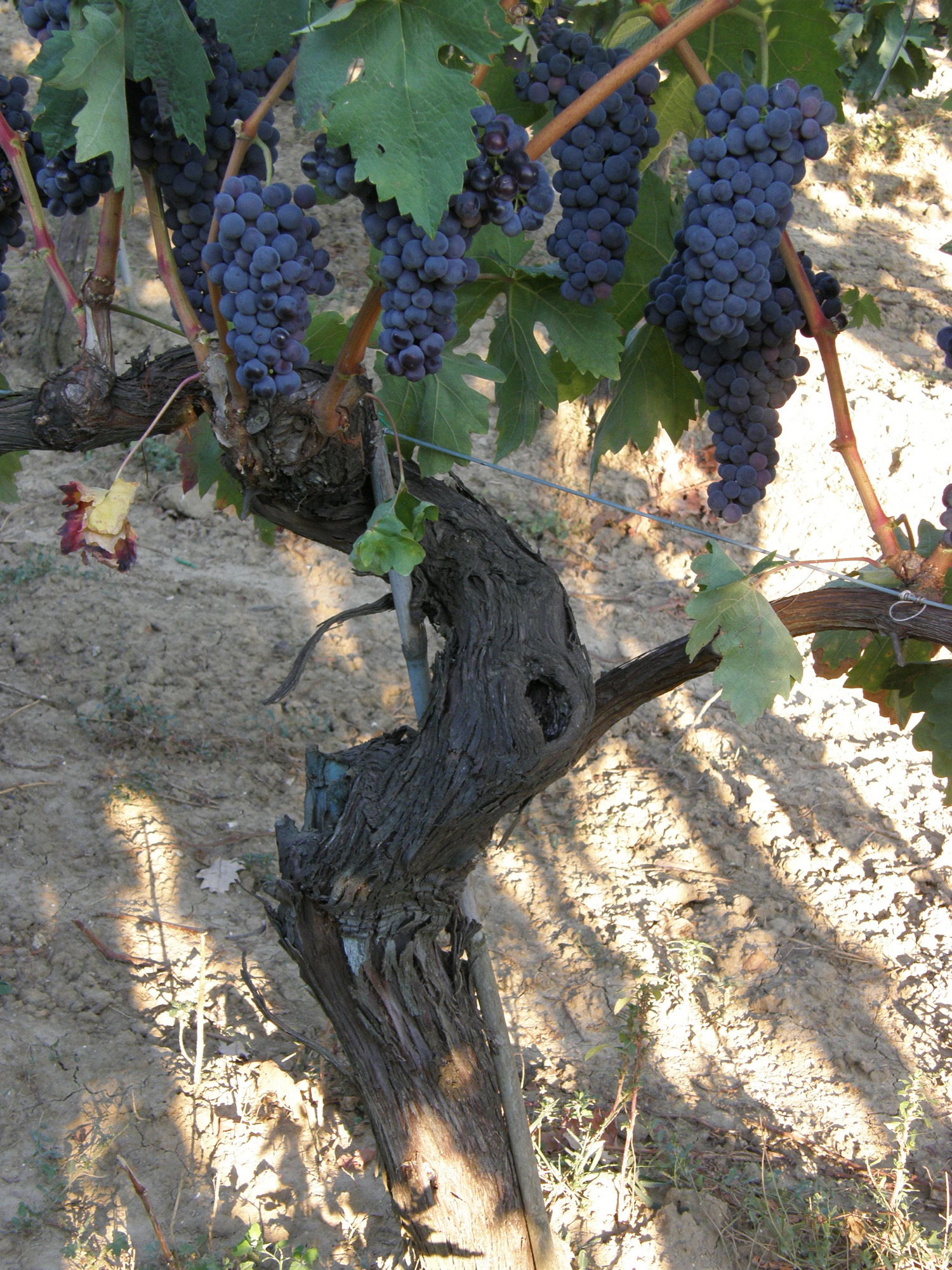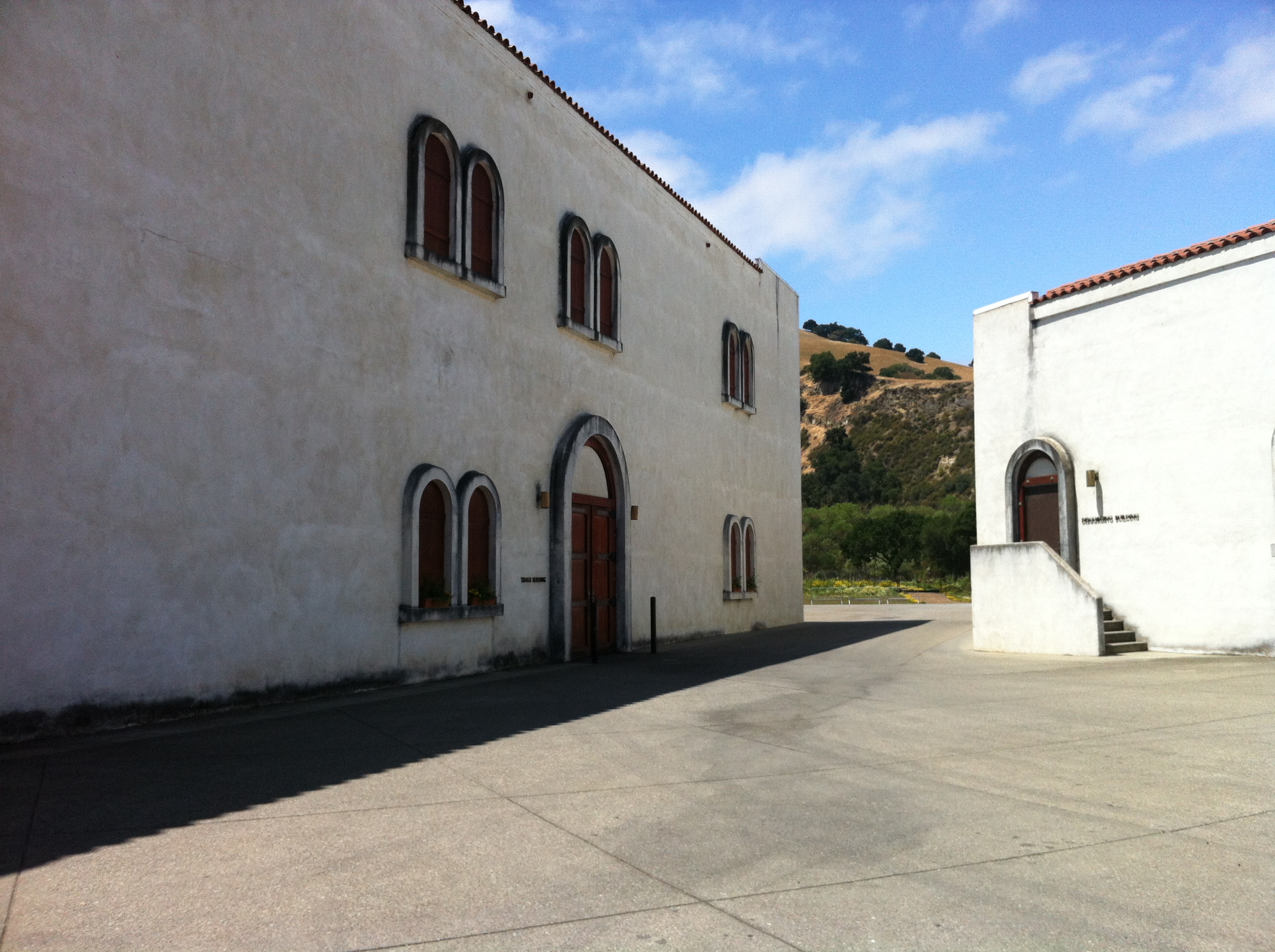|
Alexander Valley AVA
The Alexander Valley (Wappo: Unutsawaholmanoma, "Toyon Bush Berry Place") is a Californian American Viticultural Area (AVA) just north of Healdsburg in Sonoma County. It is home to many wineries and vineyards, as well as the city of Cloverdale. It is the largest and most fully planted wine region in Sonoma.J. Robinson (ed) ''"The Oxford Companion to Wine"'' Third Edition pg 643 Oxford University Press 2006 Highway 101 runs through the valley, and the Russian River flows down the valley, surrounded by vineyards on both sides. From the higher elevations of the valley rim, there is a view as far south as Taylor Mountain and Sonoma Mountain. The region was named for Cyrus Alexander, owner of a part of the Rancho Sotoyome Mexican land grant, in 1847. Granted AVA status in 1984, the boundaries of the appellation are defined in the Code of Federal Regulations, Title 27, Section 9.53. History In its early history, the territory commonly referred to as the "Alexander Valley" denot ... [...More Info...] [...Related Items...] OR: [Wikipedia] [Google] [Baidu] |
American Viticultural Area
An American Viticultural Area (AVA) is a designated wine grape-growing region in the United States, providing an official appellation for the mutual benefit of winery, wineries and consumers. Winemakers frequently want their consumers to know about the geographic pedigree of their wines, as wines from a particular area can possess distinctive characteristics. Consumers often seek out wines from specific AVAs, and certain wines of particular pedigrees can claim premium prices and loyal customers. If a wine is labeled with an AVA, at least 85% of the grapes that make up the wine must have been grown in the AVA, and the wine must be fully finished within the U.S. state, state where the AVA is located. Regulations The boundaries of AVAs are defined by the Tax and Trade Bureau (TTB), a component of the United States Department of the Treasury. The TTB defines AVAs at the request of wineries and other petitioners. Prior to the TTB's creation in 2003, the Treasury’s Bureau of Alcohol ... [...More Info...] [...Related Items...] OR: [Wikipedia] [Google] [Baidu] |
Petite Sirah
Durif is a variety of red wine grape primarily grown in Australia, California, France, and Israel. Since the end of the 20th century, wineries located in Washington's Yakima River Valley, Maryland, Arizona, Texas, West Virginia, Chile, Mexico's Baja California Peninsula, and Ontario's Niagara Peninsula have also produced wines from Durif grapes. It is the main grape known in the U.S. and Israel as Petite Sirah, with over 90% of the California plantings labeled "Petite Sirah" being Durif grapes; the U.S. Bureau of Alcohol, Tobacco, Firearms and Explosives (ATF) recognizes "Durif" and "Petite Sirah" as synonyms for the same grape.PS I Love YoPetite Sirah Timeline It produces tannic wines with a spicy, plummy flavour. The grape originated as a cross of Syrah pollen germinating a Peloursin plant. On some occasions, Peloursin and Syrah vines may be called Petite Sirah, usually because the varieties are extremely difficult to distinguish in old age. History In the 1860s the Fren ... [...More Info...] [...Related Items...] OR: [Wikipedia] [Google] [Baidu] |
Healdsburg, California
Healdsburg is a city located in Sonoma County, in California's Wine Country. At the 2010 census, the city had a population of 11,254. Owing to its three most important wine-producing regions (the Russian River, Dry Creek, and Alexander Valley AVAs), Healdsburg has been continuously awarded one of the top 10 small towns in America and is home to three of the top wineries in the United States. Healdsburg is centered on a 19th-century plaza that provides an important focal point for tourists and locals. History Early inhabitants of the local area included the Pomo people, who constructed villages in open areas along the Russian River. Anglo-American and Russian settlement may have commenced in the mid-19th century, with a settlement nearby, established downstream along the Russian River near Graton, in 1836, and later the Rancho Sotoyome land grant, in 1844. In 1857, Harmon Heald, an Ohio businessman who had been squatting on Rancho Sotoyome since 1850, purchased part of the ... [...More Info...] [...Related Items...] OR: [Wikipedia] [Google] [Baidu] |
Californian (wine)
California wine production has a rich viticulture history since 1680 when Spanish Jesuit missionaries planted ''Vitis vinifera'' vines native to the Mediterranean region in their established missions to produce wine for religious services. In the 1770s, Spanish missionaries continued the practice under the direction of the Father Junípero Serra who planted California's first vineyard at Mission San Juan Capistrano. Its contemporary wine production grew steadily since the end of Prohibition, but mostly known for its sweet, port-style and jug wine products. As the market favored French brands, California's table wine business grew modestly, Taber (2005), p40 but quickly gained international prominence at the Paris Wine Tasting of 1976, when renown French oenophiles, in a blind tasting, ranked the California wines higher than the primer French labels in the Chardonnay (white) and Cabernet Sauvignon (red) categories. Taber (2005), pp216–220 The result caused a ‘shoc ... [...More Info...] [...Related Items...] OR: [Wikipedia] [Google] [Baidu] |
Wappo Language
Wappo is an extinct language that was spoken by the Wappo tribe, Native Americans who lived in what is now known as the Alexander Valley north of San Francisco. The last fluent speaker, Laura Fish Somersal, died in 1990. The loss of this language is attributed to the general use of English in schools and workplaces.Sawyer, Jesse O., "Wappo studies" (1984). ''Survey Reports''. Report #7. Wappo is generally believed to be distantly related to the Yuki language. It is distinguished by influence of Pomoan languages. According to Somersal, the English name for the people and language is derived from the Spanish word ''guapo'', meaning "handsome" or "brave". The people called themselves ''Micewal''. The Pomoan exonym, or name for them, was ''Ashochimi'' ("northerners"). Paul Radin published the first texts on Wappo grammar in the 1920s. Jesse O. Sawyer published ''English-Wappo Vocabulary'' in 1965 and continued to study Wappo grammar throughout his life. Other linguists who have contri ... [...More Info...] [...Related Items...] OR: [Wikipedia] [Google] [Baidu] |
Zinfandel
Zinfandel (also known as Primitivo) is a variety of black-skinned wine grape. The variety is grown in over 10 percent of California vineyards. DNA analysis has revealed that it is genetically equivalent to the Croatian grapes Crljenak Kaštelanski and Tribidrag, as well as to the Primitivo variety traditionally grown in Apulia (the "heel" of Italy), where it was introduced in the 18th century and Kratošija in Montenegro.Jancis Robinson, 'The Great Grapevine'' in ''The Financial Times'', October 12th, 2012 The grape found its way to the United States in the mid-19th century, where it became known by variations of a name applied to a different grape, likely "Zierfandler" from Austria. The grapes typically produce a robust red wine, although, in the United States, a semi-sweet rosé (blush-style) wine called White Zinfandel has six times the sales of the red wine. The grape's high sugar content can be fermented into levels of alcohol exceeding 15 percent. The taste of the red ... [...More Info...] [...Related Items...] OR: [Wikipedia] [Google] [Baidu] |
Viognier
Viognier () is a white wine grape variety. It is the only permitted grape for the French wine Condrieu in the Rhône Valley.J. Robinson ''"The Oxford Companion to Wine"'' Third Edition pg 754 Oxford University Press 2006 Outside of the Rhône, Viognier can be found in regions of North and South America as well as Australia, New Zealand, the Cape Winelands in South Africa, south Moravia region in Czechia and Israel. In some wine regions, the variety is co-fermented with the red wine grape Syrah where it can contribute to the color and aroma of the wine.Wine & Spirits Education Trust ''"Wine and Spirits: Understanding Wine Quality"'' pgs 6-9, Second Revised Edition (2012), London, Like Chardonnay, Viognier has the potential to produce full-bodied wines with a lush, soft character. In contrast to Chardonnay, the Viognier varietal has more natural aromatics that include notes of peach, pears, violets and minerality. However, these aromatic notes can be easily destroyed by too ... [...More Info...] [...Related Items...] OR: [Wikipedia] [Google] [Baidu] |
Tempranillo
Tempranillo (also known as Ull de Llebre, Cencibel, Tinto Fino and Tinta del Pais in Spain, Aragonez or Tinta Roriz in Portugal, and several other synonyms elsewhere) is a black grape variety widely grown to make full-bodied red wines in its native Spain. Its name is the diminutive of the Spanish ''temprano'' ("early"), a reference to the fact that it ripens several weeks earlier than most Spanish red grapes. Tempranillo has been grown on the Iberian Peninsula since the time of Phoenician settlements. It is the main grape used in Rioja, and is often referred to as Spain's noble grape. The grape has been planted throughout the globe's wine regions. In 2015, Tempranillo was the fourth most widely planted wine grape variety worldwide with under vine, of which 87% was in Spain where it is the most planted red grape variety. Unlike more aromatic red wine varieties like Cabernet Sauvignon, Sangiovese and Pinot noir, Tempranillo has a relatively neutral profile so it is often b ... [...More Info...] [...Related Items...] OR: [Wikipedia] [Google] [Baidu] |
Syrah
Syrah (), also known as Shiraz, is a dark-skinned grape variety grown throughout the world and used primarily to produce red wine. In 1999, Syrah was found to be the offspring of two obscure grapes from southeastern France, Dureza and Mondeuse Blanche. Syrah should not be confused with Petite Sirah, a cross of Syrah with Peloursin dating from 1880. The style and flavor profile of wines made from Syrah are influenced by the climate where the grapes are grown. In moderate climates (such as the northern Rhone Valley and parts of the Walla Walla AVA in Washington State), they tend to produce medium to full-bodied wines with medium-plus to high levels of tannins and notes of blackberry, mint and black pepper. In hot climates (such as Crete, and the Barossa Valley and McLaren Vale regions of Australia), Syrah is more consistently full-bodied with softer tannin, jammier fruit and spice notes of licorice, anise and earthy leather. In many regions the acidity and tannin levels of Syra ... [...More Info...] [...Related Items...] OR: [Wikipedia] [Google] [Baidu] |
Sauvignon Blanc
is a green-skinned grape variety that originates from the Bordeaux region of France. The grape most likely gets its name from the French words ''sauvage'' ("wild") and ''blanc'' ("white") due to its early origins as an indigenous grape in South West France. It is possibly a descendant of Savagnin. is planted in many of the world's wine regions, producing a crisp, dry, and refreshing white varietal wine. The grape is also a component of the famous dessert wines from Sauternes and Barsac. Sauvignon blanc is widely cultivated in France, Chile, Romania, Canada, Australia, New Zealand, South Africa, Bulgaria, the states of Oregon, Washington, and California in the US. Some New World Sauvignon blancs, particularly from California, may also be called "Fumé Blanc", a marketing term coined by Robert Mondavi in reference to Pouilly-Fumé. Depending on the climate, the flavor can range from aggressively grassy to sweetly tropical. In cooler climates, the grape has a tendency to pr ... [...More Info...] [...Related Items...] OR: [Wikipedia] [Google] [Baidu] |
Sangiovese
Sangiovese (, also , , ) is a red Italian wine grape variety that derives its name from the Latin ''sanguis Jovis'', "the blood of Jupiter". Though it is the grape of most of central Italy from Romagna down to Lazio (the most widespread grape in Tuscany), Campania and Sicily, outside Italy it is most famous as the only component of Brunello di Montalcino and Rosso di Montalcino and the main component of the blends Chianti, Carmignano, Vino Nobile di Montepulciano and Morellino di Scansano, although it can also be used to make varietal wines such as Sangiovese di Romagna and the modern "Super Tuscan" wines like Tignanello. Sangiovese was already well known by the 16th century. Recent DNA profiling by José Vouillamoz of the Istituto Agrario di San Michele all’Adige suggests that Sangiovese's ancestors are Ciliegiolo and Calabrese Montenuovo. The former is well known as an ancient variety in Tuscany, the latter is an almost-extinct relic from Calabria, the toe of Italy. At lea ... [...More Info...] [...Related Items...] OR: [Wikipedia] [Google] [Baidu] |

.jpg)

.jpg)






